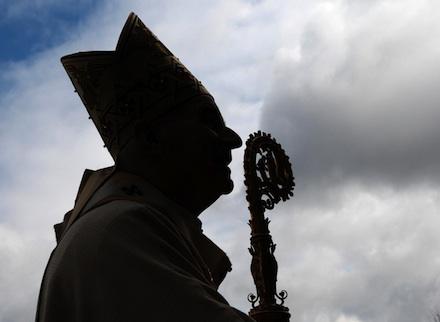How Can Cardinal Keith O'Brien Repair the Damage He Has Caused?
By Fr Alexander Lucie-Smith
What do you do when your time as a prelate ends not in honourable retirement but in disgrace? This question came to mind after reading what Mgr Leo Cushley had to say on Radio 4 yesterday about Cardinal Keith O’Brien, whose current whereabouts are unknown: “He is a free man in a free country so he can come back [to Scotland] if he wants. But the Holy See will be the ones to ask him to do whatever it is they intend. We all have our own opinions about that and what would be best for him, what would be best for those affected his actions, what would be better for the local Church. What can I say? I think it’s not impossible for Cardinal O’Brien to come back to Scotland, of course it’s not impossible, but personally speaking I think it’s somewhat unlikely that he would return to Scotland. There would be a number of reasons for that, and looking around myself I think it would probably be wiser and more helpful for the future of the Church here if he were not to be back in the country.” These comments speak for themselves. But the question remains: what is someone in Cardinal O’Brien’s position to do with himself? There are precedents which might point the way. One is provided by Bishop Eamon Casey, an outline of whose career is found here. After being engulfed in scandal in his home country, the bishop grew a beard and went to work as a missionary in Ecuador. After a few years there he worked in a parish in England. During his time in England Fr Eamon, as he was called, became well known to the people of God locally, and very much loved and respected. He devoted himself to visiting the sick in the local hospital and in their homes. Working in the same hospital myself a few years after he had finally retired to Ireland because of ill health, I was constantly stopped by people in corridors who told me just how much they had appreciated his ministry and how deeply touched they had been by his tireless devotion to the sick. Incidentally, all these people knew of his previous history. Another template is provided by Archbishop Rembert Weakland. Like Bishop Casey, Weakland was promoted while still young to positions of great responsibility. By the time he became Archbishop of Milwaukee at the age of 50, he had already been an abbot and head of the worldwide Benedictine order. When his scandalous conduct was revealed, the archbishop, who had always been a controversial figure in the American Church, put his hands up and admitted that he was to blame. In a prayer service at his cathedral after his resignation, wearing a purple penitential stole, Archbishop Weakland offered an apology that recalled the public penances of old. (There is an extract of his speech here.) If memory serves, this apology had the desired effect: though the object of much anger, the archbishop was recognised as being sincerely repentant, and was effectively forgiven by his people. In both cases it might be fair to say that the men who had fallen worked out paths to redemption. They had both harmed the body of Christ, the Church, but both, in differing ways, worked towards repairing that damage. Penance and redemption are important parts of the Catholic landscape, not just for those who fall (and that means for all of us) but also for those who witness the fall of others. They need to repent, we need to forgive, we all need to move on. With Cardinal O’Brien, that process seems a little stuck at the moment. My hope is that, as in the cases of Weakland and Casey, we may all find peace in this matter: and that peace would include not just the fallen, but also the wider Church, and those who have been hurt too.
|
.
Any original material on these pages is copyright © BishopAccountability.org 2004. Reproduce freely with attribution.
